A trip to experience the culture of IseJingu
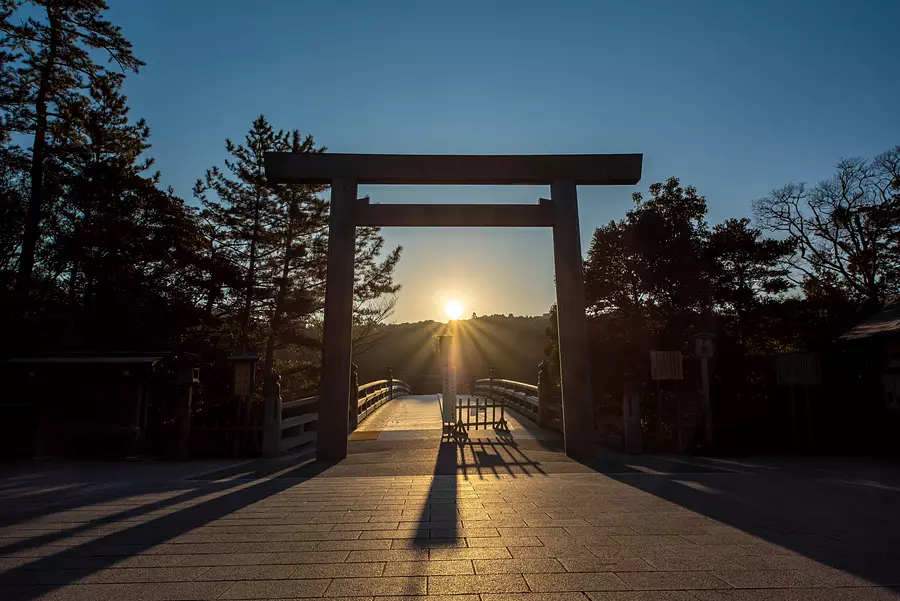
area
- Ise Shima
Season
- All seasons
schedule
1 night 2 days
transportation
car
Ise IseJingu, located in Ise and boasting a history of over 2000 years, is the spiritual hometown of the Japanese people. IseJingu Shima, where IseJingu is located, is located in Futamigaura, where Meotoiwa(rocksofthemarriedcouple) is said to have been used for purification before visiting Ise Grand Shrine.It was built as a rest and accommodation facility for honored guests visiting IseJingu. There are many spots related to IseJingu Grand Shrine, such as the guesthouse and Kawasaki, the kitchen of Mr. Ise, which flourished as a wholesale district. If you take this course, you will be able to fully experience the culture of IseJingu.
Meotoiwa(rocksofthemarriedcouple)
10:00-10:45
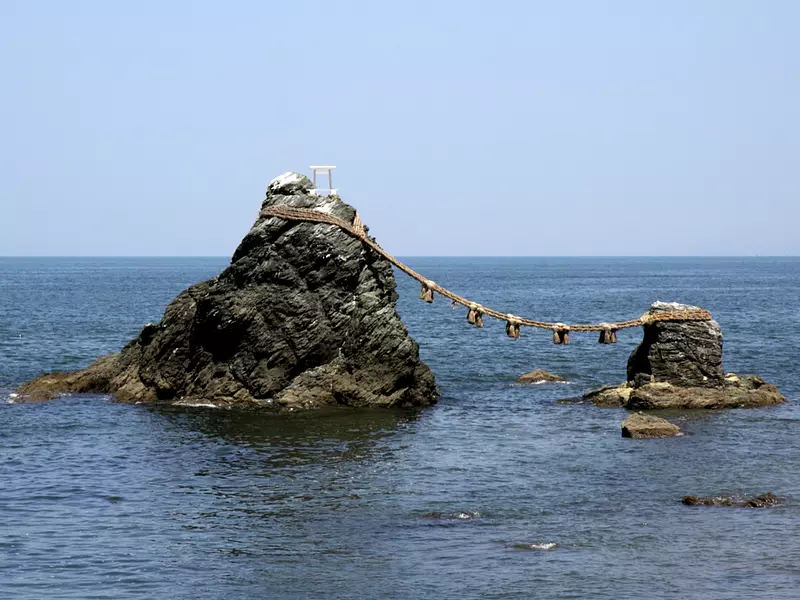
Meotoiwa(rocksofthemarriedcouple) is considered to be a torii gate from which to admire the Okitamajinseki and the sunrise. Otokoiwa is 9m high, Onnaiwa is 4m high, and the Oshimenawa that connects the Meotoiwa(rocksofthemarriedcouple) is 35m long and stretched 16m to Otokoiwa and 10m to Onnaiwa. It is 9m long.
The Oshimenawahari Shinto ritual is held every year on May 5th, September 5th, and Saturdays and Sundays in mid-December, and it is crowded with many people.
・From May to July, you can see the sunrise from between Meotoiwa(rocksofthemarriedcouple).
Especially on clear days around the summer solstice, you can see the sunrise over the back of Mt. Fuji in the distance, and the area is crowded with photographers and worshipers.
・From autumn to winter, you can see the full moon from between Meotoiwa(rocksofthemarriedcouple).
Guest house
11:00-11:45
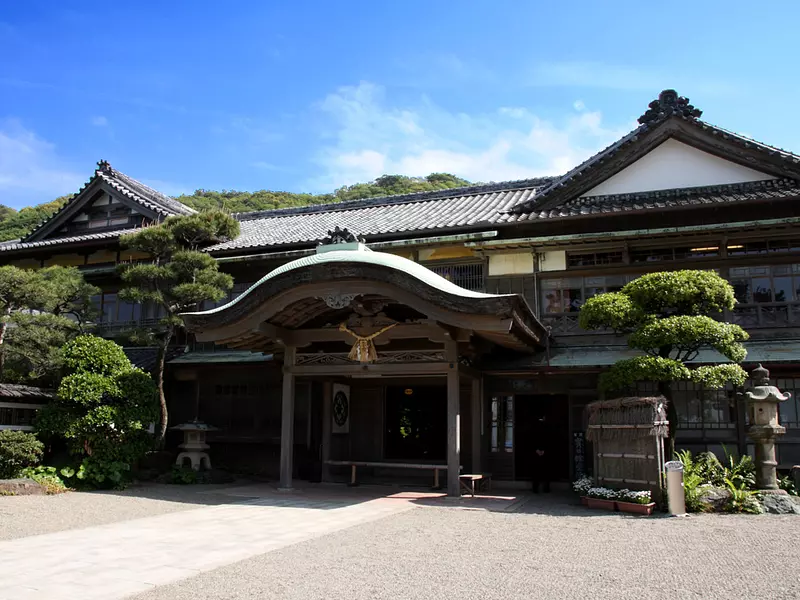
Kawasaki townscape
12:00-13:00
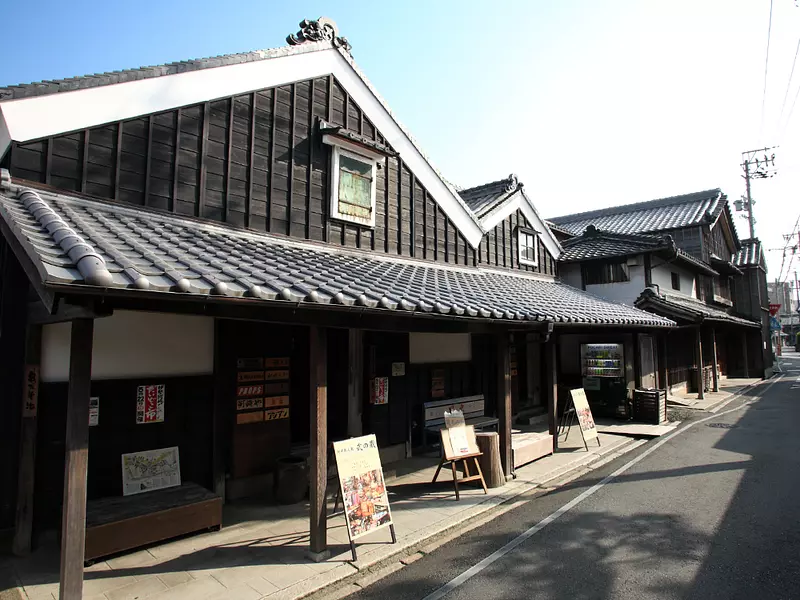
IseJingu Geku (Toyouke-daijingu)
13:15-14:15
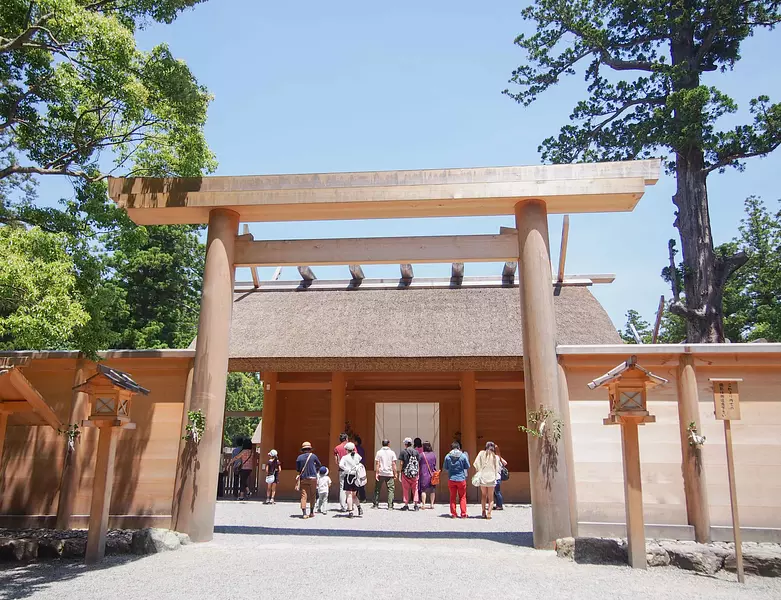
Passing through the torii gate, stepping on the gravel, and walking along the approach path with gentle sunlight filtering through the trees, you will be filled with a refreshing feeling.
SenguKanMuseum [Museum of IseJingu]
14:20-16:00
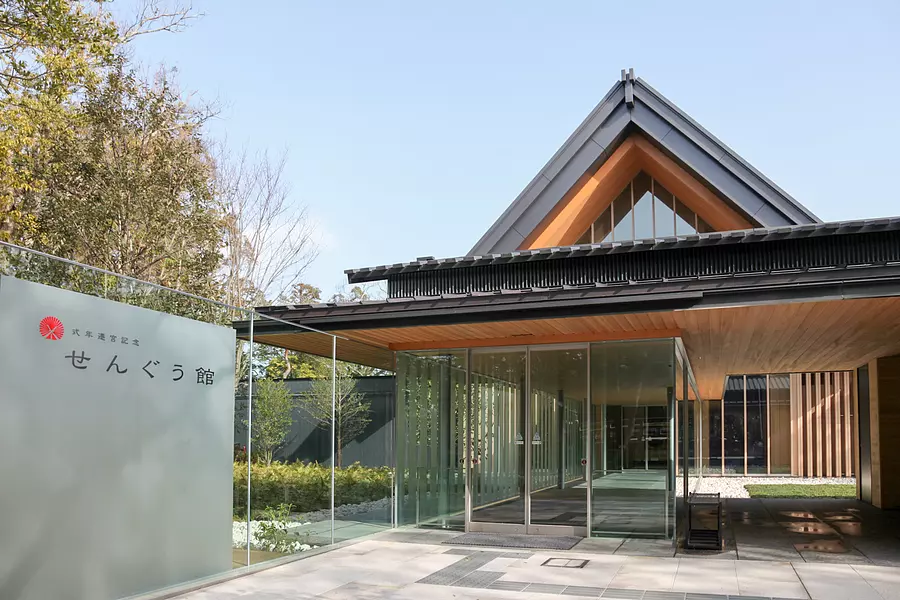
The basic philosophy is to "convey ShikinenSengu the Jingu Shrine," and this facility displays some of the tools, rituals, costumes, and sacred treasures used in the construction of ShikinenSengu, which is repeated once every 20 years.
Ancient Inn Iku
16:20
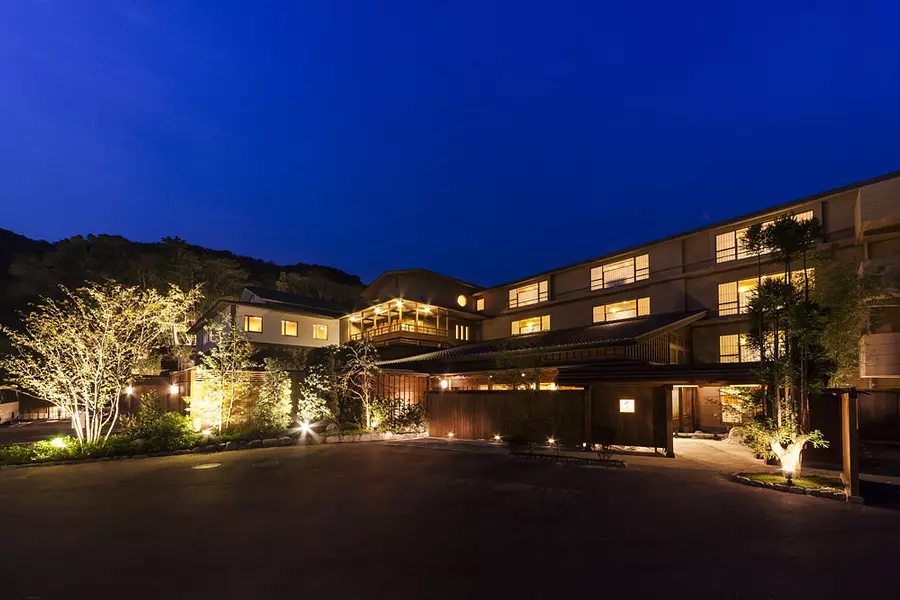
The lush forest that spreads out in front of the rooms and baths connects directly to the Naiku Forest.
This is an inn that makes you feel connected to Ise-san.
Inside the hotel, you can enjoy two large public baths and four private open-air baths with different styles.
Ancient Inn Iku
10:00
IseJingu Naiku (Kotaijingu)
10:10-11:40
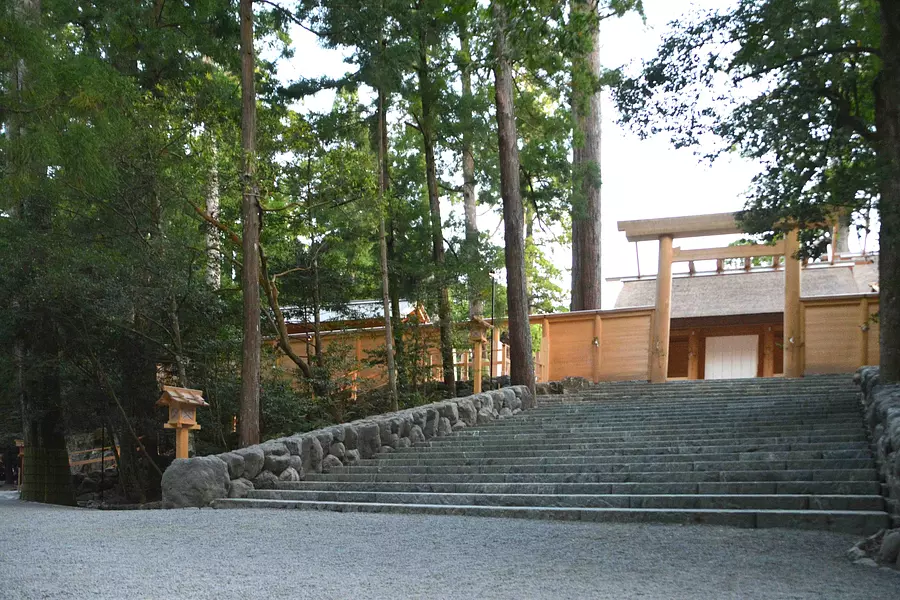
On the banks of the Isuzu River, at the foot of Mt. Kamiji, it is surrounded by a dense forest, and the approach to the shrine is paved with gravel.
ShikinenSengu, which takes place once every 20 years, has continued for 1,300 years.
Oharai-Machi
11:50-12:50
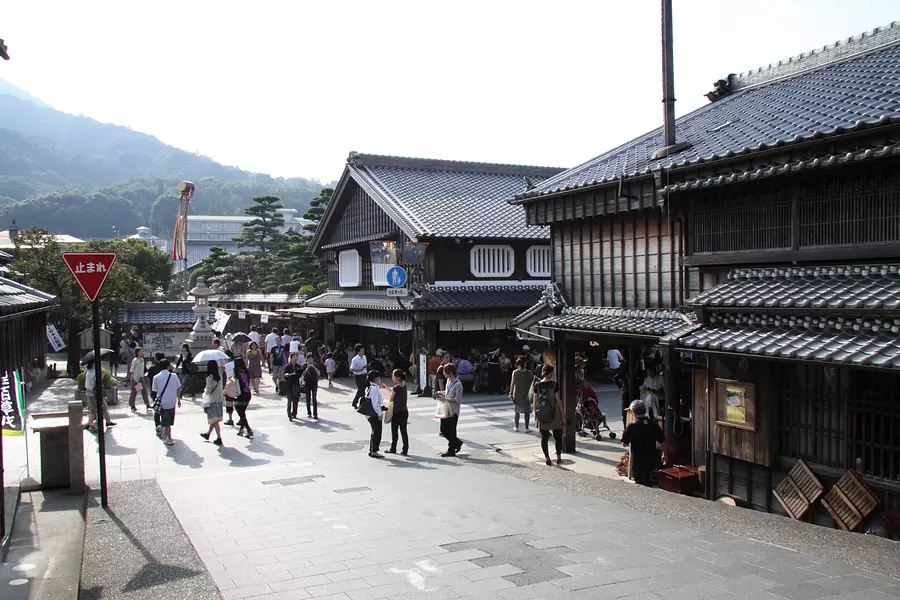
Okage-yokocho
12:50-13:50
Ise Shima Skyline
14:00-14:45
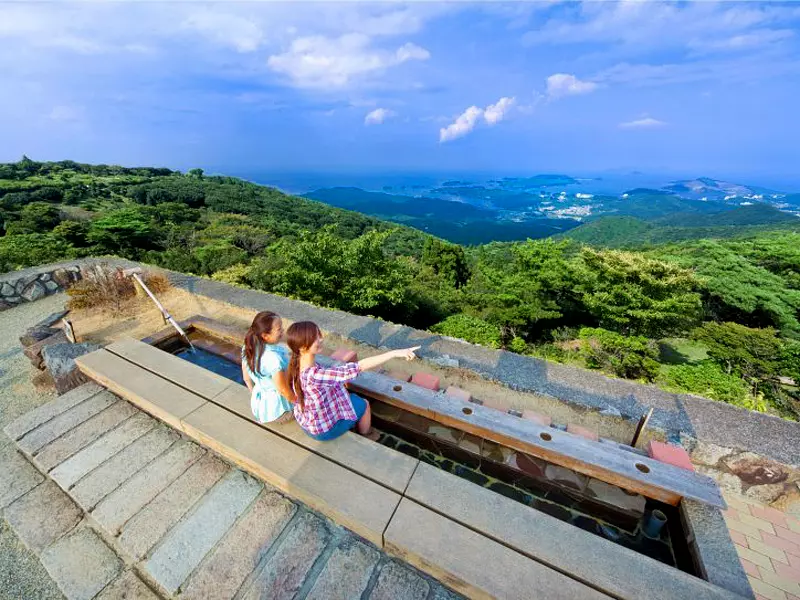
On a clear day, you can even see the Japanese Alps and Mt. Fuji. In the vast 150,000 square meter garden at the top of the mountain, you can enjoy seasonal flowers such as Asaguma Nanakusa and Jingu Azalea, and there are also hammocks and walking trails.
There is also a photo spot called ` The Post in the sky'' on the mountaintop observation deck!
Near the top of the mountain, there is Kongosho-ji KongoshojiTemple, a famous temple of the Nanzen-ji sect, which has been famous for a long time ago, saying, ``If you visit Ise, put on Asakuma.'' This temple is also called the inner temple of the shrine as it protects the demon gate of IseJingu. The main hall is designated as a nationally designated important cultural property, and one of Japan's three great Kokuzo Bodhisattvas is enshrined here.
KongoshojiTemple
15:00-16:30
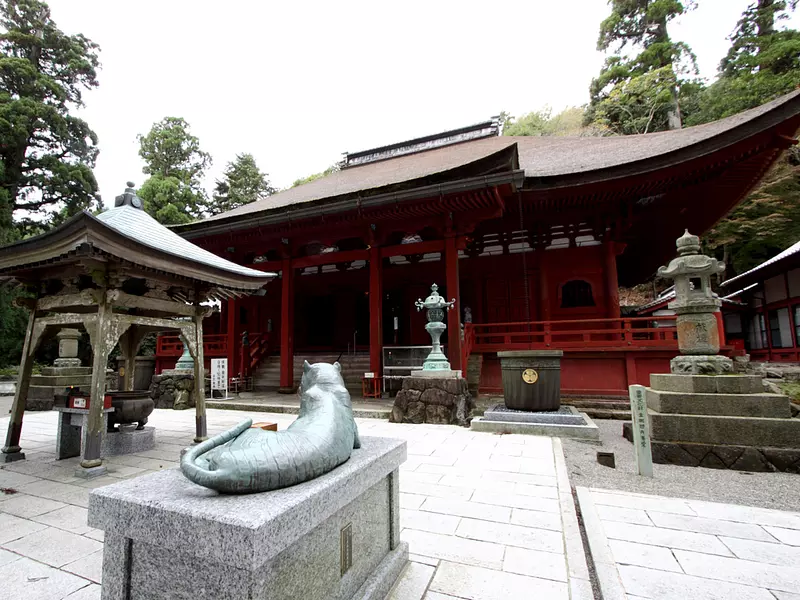
In the second year of Tencho (825), Kobo Daishi Kukai built the main dojo for Shingon esoteric Buddhism, enshrining Fukuichi Mankokuzo Bodhisattva as the principal image, and named it Shobōzan Kabutsuin Kongoshoji KongoshojiTemple. It is said that Kobo Daishi Kukai practiced Kokuzo Gumonjiho on this mountain. After that, a period of no residence continued, and in the third year of Meitoku (1392), the 71st head of Kamakura Kenchoji Temple (61st head of Engakuji Temple), Butji Zen Master, entered the temple and worked to revive the temple. Butschi Zenji is regarded as the founder of the Chukyo sect, and he converted from the Shingon sect to the Rinzai sect, becoming a temple of the Nanzenji sect of the Rinzai sect.
It suffered fires in 1597 and 1609, but in 1610 Tokugawa Ieyasu ordered Terumasa Ikeda, lord of Himeji Castle, to rebuild the main hall, Maniden. After that, it was again destroyed by fire in 1804 and 1887, and many halls were lost. Existing buildings from the Edo period include Maniden, Legal Hall, Gumonjido, Uhodo, Bokaiin, Yorakuin, Donkaiin, and Kogenin.
Founding year: 539-571
Other recommended courses

Healing Mie's finest beauty salon for you
Ise Shima
A recommended course for women's groups who enjoy stylish hotels and beauty salons, and are soothed by forests and waterfalls!
Click here for the recommended special feature site in Iganabari https://www.kankomie.or.jp/special/iganabari/

Let's cycle through Ise slowly! cycling course
Ise Shima
Let's take a leisurely bike ride through the quaint town of Ise. You might see some sights that you wouldn't see on regular sightseeing... We also recommend bringing your camera with you. There are many pedestrians, so be careful when walking. IseCity Tourism Association offers rental bicycles. Please check here for details. http://ise-kanko.jp/rentacycle/
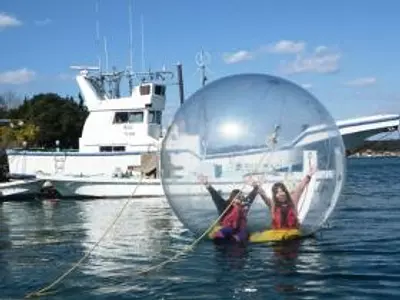
A trip to enjoy nature in Ise-Shima
Ise Shima
A course where you can enjoy interacting with nature, such as Shima Nature School, which offers a rich menu of nature experiences in the beautiful Ago Bay, and UmiHozuki, where you can experience rocky shore experiences and local cuisine.
Stay overnight and relax at NEMU RESORT.
